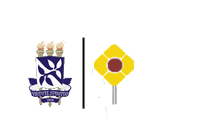Objective
Investigate the use of psychoactive substances at least once in life among students at the beginning and end of their courses and determine the associated factors.
Methods
A cross-sectional study conducted with a representative sample of 398 students in public university. The students answered a questionnaire validated for the evaluation of drug use and socio-demographic data. Poisson regression analysis was performed.
Results
A total of 56.3% and 13.3% of the students had used both legal and ilegal drugs. The following variables remained significantly associated with legal drug use in the final model: male sex (PR=1.48; 95%CI: 1.25-1.76), older age group (PR=1.23; 95%CI: 1.03-1.47), not living with parents (PR=1.20; 95%CI: 1.01-1.41), not having a religion (PR=1.37; 95%CI: 1.16-1.62) and taking a course in the health field (PR=1.33; 95%CI: 1.08-1.64). The following variables were significantly associated with ilegal drug use: male sex (PR=2.33; 95%CI: 1.35-4.02), older age group (PR=2.27; 95%CI: 1.28-4.02), higher monthly income (PR=1.73; 95%CI: 1.05-2.85) and not having a religion (PR=1.70; 95%CI: 1.02-2.84).
Conclusion
Legal and ilegal drug use at least once in life was associated with social factors, sex, age, income, religion, living situation and type of higher education course.
Referências para citação: DANTAS, Laíza Rocha et al. Use of psychoactive substances at least once in life among Brazilian university students at the beginning and end of courses and the associated factors. Cad. saúde colet.[online]. 2017, vol.25, n.4, pp.468-474. ISSN 1414-462X. http://dx.doi.org/10.1590/1414-462x201700040091.
Obs.: material linkado com o banco de dados Scielo.
